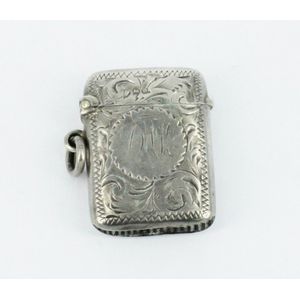Sapphire and Diamond Curved Panel Earrings
You must be a subscriber, and be logged in to view price and dealer details.
Subscribe Now to view actual auction price for this item
When you subscribe, you have the option of setting the currency in which to display prices to $Au, $US, $NZ or Stg.
- Brilliant Cut - In their naturally occuring state diamonds have little life or sparkle and for many centuries were simply cut in half and worn in amulets. Invented at the end of the 17th century by a Venetian diamond cutter, a "brilliant cut" diamond has 58 facets arranged in a regular geometric relationship, with 33 above the crown and 25 below on the pavilion.
The introduction of the brilliant cut increased the popularity of diamonds in jewellery as it was the first cut to reveal the fire of the diamond, with the light being internally reflected from one facet to another, and was superior to the previously used table cut and rose cut.Variants to the brilliant cut have emerged since the end of the 17th century, but the popularity of the original brilliant cut has continued to the present time, where it is still the most commonly found cut.
. - Bezel - On a clock or watch, the bezel is the metal frame into which the watch or clock glass is fitted. In clocks, the bezel may include a hinge and a flange, in effect a door to the face of the clock. In jewellery the bezel is a band of metal with a projecting lip that holds the gemstone in its setting.
- Pave Setting - Pave setting is a style of setting stones in jewellery where the small stones are placed close together in holes drilled in the metal, the burr of the metal around the stone being pressed over the edges to hold the stone in position.
This item has been included into following indexes:
- earrings, diamond - diamond and sapphire 610
- earrings, gold
Visually similar items

Chinese silver export ware cigar case having a lift top push button spring loaded lid, a fully collapsable folding body, with raised bamboo trees to one side & various people a leisure amongst a pagoda scene, with a shield shaped cartouche. Length 9.8 cm w

Silver patent Chinese cigarette case decorated with bamboo and village scene and having a central crest carved with the initials 'Njj' and a button mechanism to open top, size 9 cm x 6 cm, weight 93g

Figurative German silver vesta box, embossed 'Village Scene', plated interior slide, late 19th century. 925 silver.

An Edward VII silver vesta case, foliate engraved and monogrammed, contains original matches, makers mark obscured, Chester, 1904.
